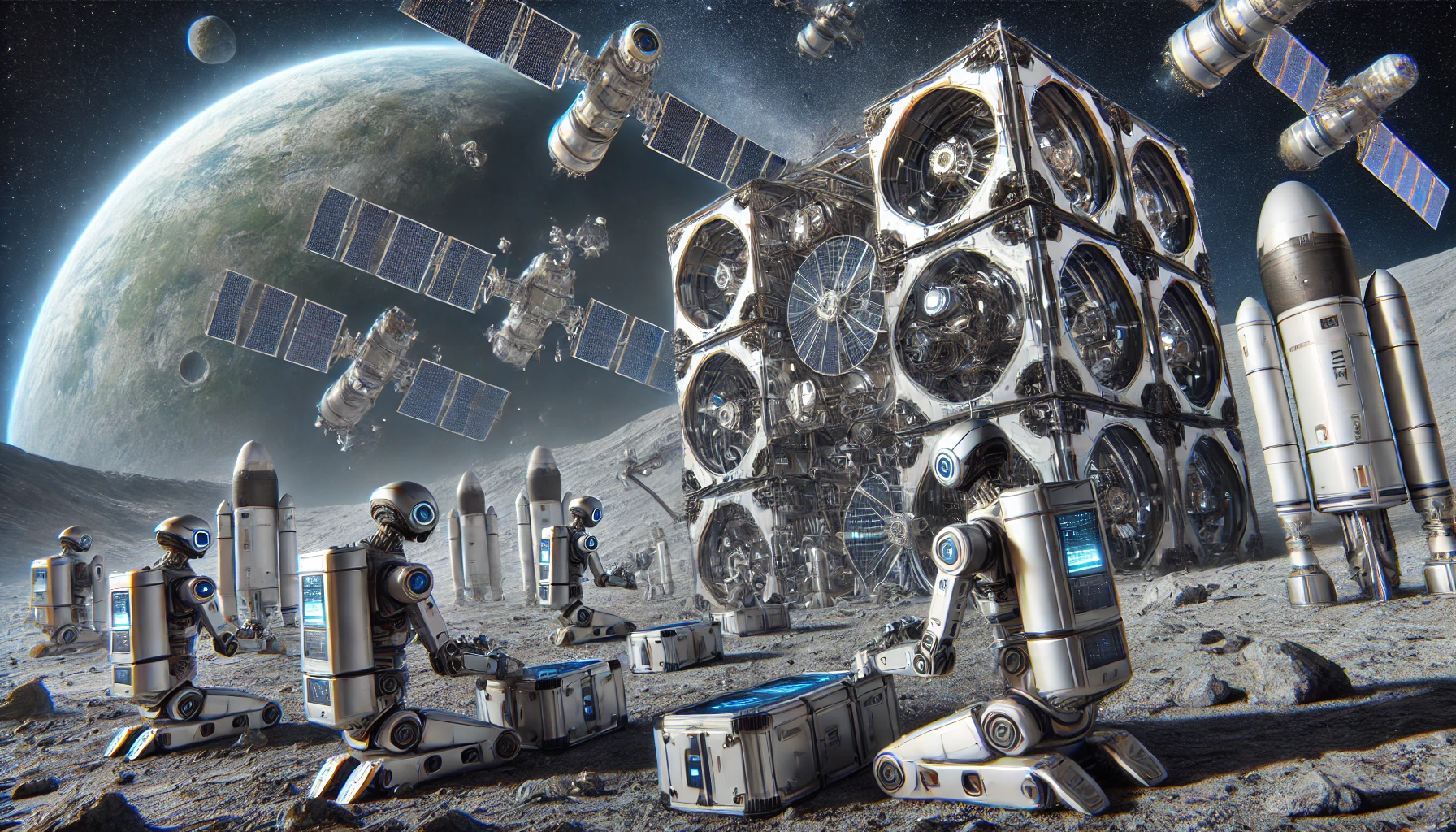Self-Assembling Robots: The Future of Space Exploration Built by Bots

The Future of Space, Built by Bots?
Imagine this: you're floating through the vast expanse of space, and suddenly, you see robots assembling a satellite right in front of your eyes. No astronauts. No ground control shouting orders. Just robots, clicking together like high-tech LEGO pieces. Welcome to the future of space exploration, where self-assembling robots are taking over! These robots could change everything from how we build habitats on the Moon to how we repair satellites in orbit. The possibilities are as vast as space itself.
What Are Self-Assembling Robots Anyway?
Self-assembling robots are essentially a team of tiny modular bots that work together like puzzle pieces to create larger structures. Think of them as the Voltron of robotics! Each bot can snap, twist, and rotate itself into place, forming anything from a small tool to a massive structure, like a spaceship or even a space station. No need to lug giant pre-built modules into space – these robots do all the hard work once they get there!
Building Habitats in Space: No Hard Hats Required
One of the most exciting applications of these self-assembling robots is building space habitats. Picture a colony on Mars or a lunar base. With traditional construction methods, we’d have to send tons of materials and teams of astronauts to do the work. With self-assembling robots? We just ship a bunch of little bots and watch them go to town. These robots could build the walls, floors, and ceilings of space habitats, assembling everything with precision. It’s like having a team of expert construction workers, but in robot form, and without the lunch breaks.
Satellite Repairs: No Spacewalks Needed
Another game-changing use of self-assembling robots is in satellite maintenance and repairs. Currently, fixing a satellite requires a spacewalk, which is both risky and costly. But imagine if you could just send a crew of self-assembling robots to fix the problem. They could dock with the satellite, analyze the damage, and assemble the necessary tools and parts right on the spot. No need to put human lives in danger, and no need for expensive spacewalks. These bots could handle it all, like a cosmic pit crew!
How Modular Robotics Could Change Space Missions
Modular robotics, the technology behind self-assembling robots, is already in development on Earth, with exciting potential for space. These systems are flexible, meaning they can be adapted to any mission. Need a bigger base on Mars? Send more bots. Satellite repair mission? No problem. And because they’re modular, they can easily swap out broken pieces, essentially self-repairing as they go. This flexibility makes them perfect for long-term missions where you can’t just call for backup. They're also lightweight, which saves on the cost of sending heavy machinery into space.
Challenges? Of Course, There Are Challenges
Now, don’t get too excited just yet – we’re not quite ready to unleash armies of self-assembling robots into space. There are still a few challenges to tackle. For one, the technology needs to be robust enough to withstand the harsh environment of space – think extreme temperatures, radiation, and microgravity. And then there’s the communication issue. How do you coordinate a bunch of robots spread across the surface of Mars? Researchers are working on AI-powered systems that will allow the robots to communicate with each other and make real-time decisions. But for now, we’re still in the experimental phase.
The Future Is Bright, and It’s Robot-Shaped
Despite the challenges, the future of self-assembling robots looks incredibly promising. NASA and other space agencies are already investing in this technology, seeing its potential for future missions. The idea of sending humans into space will never go away, but these robots could take on the dirty, dangerous jobs, making space exploration safer and more efficient. Who knows, in a few decades, we might even have robot-built cities on the Moon or Mars!
What Do You Think? Ready for a Future Where Robots Build Our Space Stations?
So, what’s your take? Would you trust an army of self-assembling robots to build your future lunar vacation home? Or do you think we should stick to human hands for the job? Share your thoughts!



